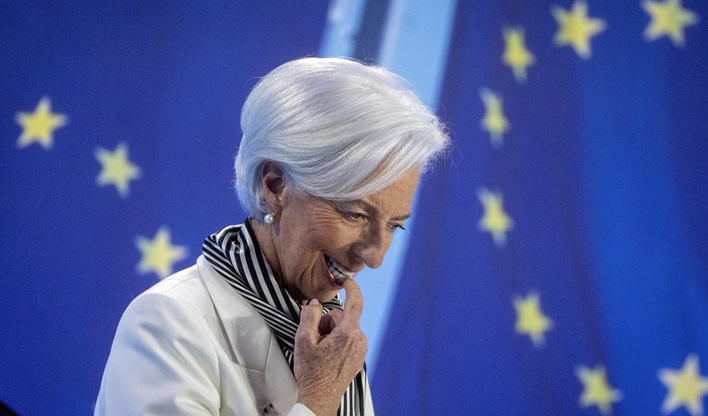
Financial markets widely expect an interest rate hold by the Bank of England on June 20, but what if they’re wrong? A surprise cut is likely to have ripple effects across the stock, bond and currency markets.
Futures trading implies the chances of a rate cut next week are below 10%, with August the next likely date for a change in monetary policy. If there is indeed a rate cut this year, it is likeliest to occur on November 7, overnight index swaps currently suggest.
And next week’s Bank meeting is the last before the upcoming UK general election, which backs the case for caution. It's independent of government policy, so must be wary of appearing to assist an incumbent party staking its ongoing electoral chances on lower inflation – and cheaper money.
But the Bank of England, despite its recent caution, still has the capacity to surprise the markets, and there is disagreement between traders and economists about next week’s decision.
Markets Have Been Wrong on Rate Cuts Before
Another reason to be wary is the BoE’s own history of wrong-footing investors.
Back in December 2021, when it was making its initial efforts to contain an inflationary surge in the real economy, the MPC voted for a 0.15 percentage point increase in the base rate to 0.25%. (Rates have since gone from 0.1% to 5.25%).
Markets were not expecting this. At the MPC’s November 2021 meeting, committee members voted against an increase. With the benefit of hindsight, onlookers may now say the BoE was slow off the mark in attacking inflation.
Readers with longer memories may also recall the infamous “unreliable boyfriend” moniker given to former BoE governor Mark Carney – after Labour MP and former Treasury Select Committee member Pat McFadden accused the Canadian financier of giving mixed signals to savers and investors about the Bank’s intentions in 2014. Carney talked over many BoE meetings about the possibility of rate increases, but these never materialised. So-called “forward guidance”, where the Bank signalled its future intentions, was quietly scrapped.
Carney’s successor, Andrew Bailey, has been extremely careful to avoid such accusations. The current mantra for central bankers is “data dependency”, which means that policymakers are reactive to the monthly numbers on inflation, wages, jobs and economic conditions.
Mortgage Rates Remain High
The BoE’s primary focus will be on what is going on in the real economy, and here there is still some significant pain. Prime minister Rishi Sunak may be claiming credit from having lowered inflation to 2.3%, but interest rates at 5.25% are still making the affordability of debt difficult. Mortgages are priced above this level and credit cards and loans can command APRs of around 20%.
On this, the MPC will have one eye firmly on the rising cost of mortgage debt, and, in particular, the rising “effective interest rate” (the actual interest paid) on new mortgages. In April this increased by one basis point to 4.74%, while the rate on outstanding mortgage loans increased by seven basis points to 3.57% in April.
“Niggling inflationary pressures and an impending general election make an imminent interest rate cut less likely, but the sign of lingering affordability challenges for buyers was evident in the effective rate on newly drawn mortgages,” says Bestinvest personal finance analyst Alice Haine.
“According to the latest Household Costs Index (HCI) in the year to March, UK households with mortgages remain the hardest hit by inflation with costs up by 5.5% compared to just 3.3% for owner occupiers.”
So while homeowners may already have had some good news in the form of falling inflation, nobody envies the folk trying to remortgage – let alone those with fixed rate mortgages coming off 1-2% deals and taking on 6% variable-rate mortgages.
How Will Equities be Affected?
Markets tend to "price in" any changes very quickly, so the reaction to this kind of news will be swift. We saw this last week with the European Central Bank’s decision to cut rates, which was widely expected by markets – and well flagged by policymakers.
As a broad trend, rate cuts that haven’t resulted in economic recessions tend to be followed by strong equity returns.
“Looking at data since the early 1980s, the performance of the S&P 500 over the subsequent 12 months after the first rate cut averaged 14.2%, a higher number compared to the average 12-month return,” say Julius Baer head of research Christian Gattiker, chief economist David Kohl, head of equity strategy Mathieu Racheter, and economist David Alexander Meier.
“As such, rate-cutting cycles that are not triggered or followed by a recession tend to be accompanied by strong equity returns. That said, we acknowledge that each cycle is different.”
Indeed, there are caveats, particularly with markets in bullish mode.
“This time around, a lot of the positive performance has been frontloaded, and we are still of the view that developed market equities are ripe for a correction, which would be a healthy development,” they say.
UK equity markets are already at record highs. Would they go higher?
“Would it come as a positive surprise? Yes. Would it move markets materially? No,” Field says.
“The FTSE 100 touched all-time highs last month and is trading just below that now. So, to a large degree some macroeconomic optimism is already built into prices.”
Morningstar Wealth associate portfolio manager Nicolo Bragazza adds that, should the BoE cut, small-cap stocks will likely benefit the most.
“Within equities, smaller companies should be among the beneficiaries of a rate cut as they are more sensitive to the rate environment than larger global players with more reliable access to global financial markets,” he says.
“Along with smaller companies, utilities tend to be positively impacted by rate cuts as they are leveraged businesses and their attractiveness depends also on the spread between their dividend yield and that on government bonds.”
How Will Bonds be Affected by a Surprise Rate Cut?
Conventional wisdom suggests rate cuts are better for equities than bonds. But while bonds have returned to favour in the higher interest rate era because of their tempting yields, rate cuts may not be bad for them either.
Falling interest rates mean lower yields, which push bond prices higher – a key factor in total returns. And lower rates make existing bonds, and particularly those already issued during a period of rate hikes, more attractive for yield.
UK government 10-year gilts currently yield more than 4%, which is below base rate but above inflation. Yields have dropped back over a one month and one year period as markets anticipate interest rate cuts this year as inflation falls.
Many pension funds, for whom rising yields have caused havoc, could also stand to benefit from a looser monetary approach. This is where the specifics really matter, Bragazza says.
“As a general rule, lower yields imply higher bond prices, and this is because future cash flows are discounted at a lower yield – thereby increasing their value,” he says.
“However, the extent to which a cut will move bond prices not only depends on the size of the rate cut but also by how much that rate cut is already priced in by the market.”
Given markets are not currently expecting a rate cut at all, bond investors will likely be caught off guard, and that will probably have a more immediate impact.
“Currently, the market is not pricing a high probability of a cut by the BoE so any cut would be a surprise. Surprise rate cut have generally a stronger immediate impact on markets, and, generally, we can expect these to be positive news for both bonds and equities as they should reduce the discount rate,” Bragazza says.
What Should Investors Do?
In an ideal world, the BoE’s first rate cut of the cycle presents a clear case for being invested in both equities and bonds. While rates may be cut this summer, they remain "restrictive", ie high in comparison with the period since the financial crisis.
Amid some significant uncertainty, a well-diversified portfolio will stand investors in good stead in the long term.
“Although rate cuts are usually a positive signal for the markets, the guidance provided by the central bank is equally important and the motivations behind a decision and the path ahead are as important as the rate cut itself,” says Bragazza.
Even if a rate cut is a question of when, not if, then, it still pays to keep an eye on the detail.



























